
Sir John Everett Millais Painting Reproductions 1 of 2
1829-1896
English Pre-Raphaelite Painter
A boy of just eleven entered the Royal Academy Schools in London - the youngest student ever admitted. His name was John Everett Millais. Born in Southampton in 1829, of Jersey heritage and fierce island pride, he would become one of Victorian Britain’s most visible, celebrated, and, at times, controversial painters. Knighted as a baronet and buried in St Paul's Cathedral, Millais traversed the dramatic shifts of nineteenth-century British art, from revolutionary brotherhood to royal endorsement, all while navigating personal upheaval and public acclaim.
His early life was shaped less by place than by influence. Raised partly in Jersey and Brittany, Millais benefited from the determined ambition of his mother, Emily. She moved the family to London to foster his extraordinary artistic ability and introduce him to the heart of the British art world. By 1840, he was studying at the Royal Academy. Precocious, observant, and technically gifted, Millais quickly found himself among peers who questioned academic norms. Together with William Holman Hunt and Dante Gabriel Rossetti, he co-founded the Pre-Raphaelite Brotherhood in 1848, in his family home on Gower Street.
Rejecting the idealized forms and historical tropes of High Renaissance art, the Brotherhood sought clarity, precision, and truthfulness - especially in the study of nature and emotion. Millais’s early paintings were dense with symbolic detail, their surfaces almost encrusted with naturalistic observation. His "Christ in the House of His Parents" (1849–50), with its depiction of the Holy Family in a cluttered carpenter’s workshop, scandalized the public for its raw realism. Ophelia (1851–52), now one of his most beloved works, shows the drowned Shakespearean heroine floating among river weeds and wildflowers. Every petal, every ripple, was rendered with studied accuracy.
Yet Millais was not simply painting flora and allegory. In Mariana (1850–51), inspired by Tennyson and Shakespeare, he expressed quiet defiance and female isolation through posture, pattern, and gaze. The luminosity of stained glass, the stiffness of velvet, the curl of fallen leaves - each detail served a narrative purpose. His early work could be read like a poem, line by careful line.
At the same time, his personal life was beginning to intersect with his public reputation. Through his association with the critic John Ruskin - a passionate defender of Pre-Raphaelite ideals - Millais met Ruskin’s wife, Effie Gray. She sat for his painting The Order of Release, and as the painting progressed, so too did their intimacy. Effie’s marriage to Ruskin, though legally intact, had never been consummated. In 1855, after an annulment, she married Millais. Together they would have eight children and form a prolific, ambitious, and socially active household.
Critics have long speculated whether Millais’s stylistic shift in the mid-1850s was due to his new domestic obligations, or the loss of Ruskin’s patronage. His brushwork became looser, his palette warmer, his subjects broader. Gone was the obsessive detailing of the Brotherhood. In its place came a confident, flowing realism - praised by some, scorned by others. William Morris accused him of commercial compromise. Millais, for his part, defended his evolution as natural maturity. In his 1888 article “Thoughts on our Art of Today,” he championed Rembrandt and Velázquez, calling for bolder, more intuitive methods.
Paintings such as The Eve of St. Agnes and The Somnambulist echoed Whistler’s aestheticism and subtle tonalism, while works like The Boyhood of Raleigh (1871) and The Northwest Passage (1874) gestured toward the national imagination - British history, empire, and masculine endeavor. His portraits, too, became immensely popular, affirming his status among the Victorian elite. He was not only painting for patrons, but also for mass reproduction - as in the case of Bubbles (1886), famously reproduced in a Pears soap advertisement, a decision that tarnished his artistic reputation in some quarters.
Landscape, however, became his quiet retreat. Beginning in the 1870s, Millais produced a series of autumnal Scottish scenes, often composed during family retreats in Perthshire. Paintings like Chill October (1870) or Christmas Eve (1887) speak in a different register: muted, melancholic, contemplative. They abandon allegory in favor of elemental stillness - reeds, mists, cold water. Gone is the microscopic rendering of his early years, replaced by broad gestures and atmospheric effects. These works seem less anxious to impress, more concerned with tone and time.
Millais also contributed significantly to book illustration. His drawings for Tennyson’s poems and Trollope’s novels exhibit the same narrative sensibility and compositional intelligence found in his painting. His religious prints, used for stained glass in Kinnoull Parish Church, demonstrate his adaptability across media and message.
Recognition came in stages. He was elected Associate of the Royal Academy in 1853, full Academician in 1863, and in 1885 became the first artist ever to receive a hereditary title - created Baronet of Palace Gate and Saint Ouen. He moved within powerful circles, admired by royalty and fellow artists alike. In 1896, after the death of Lord Leighton, Millais was appointed President of the Royal Academy. He died shortly after, of throat cancer, and was buried with honour in the crypt of St Paul’s Cathedral.
His legacy is complex. For decades, his later career was viewed as a retreat from artistic radicalism, a surrender to public taste. But recent scholarship has shifted the balance. Critics now see Millais’s later realism not as betrayal, but as evolution - a response to changing audiences, technologies, and ideals. His early paintings remain essential to understanding Pre-Raphaelitism; his mature works, increasingly, to understanding the foundations of modern British art.
The dramas of his life - the love triangle with Ruskin and Effie, the criticisms from former allies, the commercial collaborations - have lent themselves to film and fiction. Yet behind the gossip and grandeur remains the work: a body of painting that, at its best, balances technical brilliance with human curiosity. Whether detailing a drowning girl or an autumn marsh, John Everett Millais painted with conviction, adapting but never retreating. His career stands not as a cautionary tale, but as a testament to artistic plurality in an era of profound transformation.
His early life was shaped less by place than by influence. Raised partly in Jersey and Brittany, Millais benefited from the determined ambition of his mother, Emily. She moved the family to London to foster his extraordinary artistic ability and introduce him to the heart of the British art world. By 1840, he was studying at the Royal Academy. Precocious, observant, and technically gifted, Millais quickly found himself among peers who questioned academic norms. Together with William Holman Hunt and Dante Gabriel Rossetti, he co-founded the Pre-Raphaelite Brotherhood in 1848, in his family home on Gower Street.
Rejecting the idealized forms and historical tropes of High Renaissance art, the Brotherhood sought clarity, precision, and truthfulness - especially in the study of nature and emotion. Millais’s early paintings were dense with symbolic detail, their surfaces almost encrusted with naturalistic observation. His "Christ in the House of His Parents" (1849–50), with its depiction of the Holy Family in a cluttered carpenter’s workshop, scandalized the public for its raw realism. Ophelia (1851–52), now one of his most beloved works, shows the drowned Shakespearean heroine floating among river weeds and wildflowers. Every petal, every ripple, was rendered with studied accuracy.
Yet Millais was not simply painting flora and allegory. In Mariana (1850–51), inspired by Tennyson and Shakespeare, he expressed quiet defiance and female isolation through posture, pattern, and gaze. The luminosity of stained glass, the stiffness of velvet, the curl of fallen leaves - each detail served a narrative purpose. His early work could be read like a poem, line by careful line.
At the same time, his personal life was beginning to intersect with his public reputation. Through his association with the critic John Ruskin - a passionate defender of Pre-Raphaelite ideals - Millais met Ruskin’s wife, Effie Gray. She sat for his painting The Order of Release, and as the painting progressed, so too did their intimacy. Effie’s marriage to Ruskin, though legally intact, had never been consummated. In 1855, after an annulment, she married Millais. Together they would have eight children and form a prolific, ambitious, and socially active household.
Critics have long speculated whether Millais’s stylistic shift in the mid-1850s was due to his new domestic obligations, or the loss of Ruskin’s patronage. His brushwork became looser, his palette warmer, his subjects broader. Gone was the obsessive detailing of the Brotherhood. In its place came a confident, flowing realism - praised by some, scorned by others. William Morris accused him of commercial compromise. Millais, for his part, defended his evolution as natural maturity. In his 1888 article “Thoughts on our Art of Today,” he championed Rembrandt and Velázquez, calling for bolder, more intuitive methods.
Paintings such as The Eve of St. Agnes and The Somnambulist echoed Whistler’s aestheticism and subtle tonalism, while works like The Boyhood of Raleigh (1871) and The Northwest Passage (1874) gestured toward the national imagination - British history, empire, and masculine endeavor. His portraits, too, became immensely popular, affirming his status among the Victorian elite. He was not only painting for patrons, but also for mass reproduction - as in the case of Bubbles (1886), famously reproduced in a Pears soap advertisement, a decision that tarnished his artistic reputation in some quarters.
Landscape, however, became his quiet retreat. Beginning in the 1870s, Millais produced a series of autumnal Scottish scenes, often composed during family retreats in Perthshire. Paintings like Chill October (1870) or Christmas Eve (1887) speak in a different register: muted, melancholic, contemplative. They abandon allegory in favor of elemental stillness - reeds, mists, cold water. Gone is the microscopic rendering of his early years, replaced by broad gestures and atmospheric effects. These works seem less anxious to impress, more concerned with tone and time.
Millais also contributed significantly to book illustration. His drawings for Tennyson’s poems and Trollope’s novels exhibit the same narrative sensibility and compositional intelligence found in his painting. His religious prints, used for stained glass in Kinnoull Parish Church, demonstrate his adaptability across media and message.
Recognition came in stages. He was elected Associate of the Royal Academy in 1853, full Academician in 1863, and in 1885 became the first artist ever to receive a hereditary title - created Baronet of Palace Gate and Saint Ouen. He moved within powerful circles, admired by royalty and fellow artists alike. In 1896, after the death of Lord Leighton, Millais was appointed President of the Royal Academy. He died shortly after, of throat cancer, and was buried with honour in the crypt of St Paul’s Cathedral.
His legacy is complex. For decades, his later career was viewed as a retreat from artistic radicalism, a surrender to public taste. But recent scholarship has shifted the balance. Critics now see Millais’s later realism not as betrayal, but as evolution - a response to changing audiences, technologies, and ideals. His early paintings remain essential to understanding Pre-Raphaelitism; his mature works, increasingly, to understanding the foundations of modern British art.
The dramas of his life - the love triangle with Ruskin and Effie, the criticisms from former allies, the commercial collaborations - have lent themselves to film and fiction. Yet behind the gossip and grandeur remains the work: a body of painting that, at its best, balances technical brilliance with human curiosity. Whether detailing a drowning girl or an autumn marsh, John Everett Millais painted with conviction, adapting but never retreating. His career stands not as a cautionary tale, but as a testament to artistic plurality in an era of profound transformation.
30 Millais Paintings

Lorenzo and Isabella 1849
Oil Painting
$9690
$9690
Canvas Print
$66.17
$66.17
SKU: MJE-2556
Sir John Everett Millais
Original Size: 103 x 142.8 cm
Walker Art Gallery, Liverpool, UK
Sir John Everett Millais
Original Size: 103 x 142.8 cm
Walker Art Gallery, Liverpool, UK

Ophelia c.1851/52
Oil Painting
$6402
$6402
Canvas Print
$63.44
$63.44
SKU: MJE-2557
Sir John Everett Millais
Original Size: 76.2 x 111.8 cm
Tate Gallery, London, UK
Sir John Everett Millais
Original Size: 76.2 x 111.8 cm
Tate Gallery, London, UK
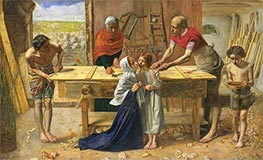
Christ in the House of His Parents c.1849/50
Oil Painting
$7024
$7024
Canvas Print
$61.56
$61.56
SKU: MJE-2558
Sir John Everett Millais
Original Size: 86.4 x 139.7 cm
Tate Gallery, London, UK
Sir John Everett Millais
Original Size: 86.4 x 139.7 cm
Tate Gallery, London, UK
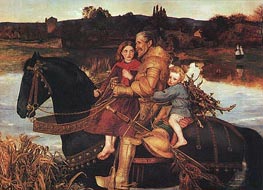
A Dream of the Past - Sir Isumbras at the Ford 1857
Oil Painting
$3447
$3447
Canvas Print
$67.35
$67.35
SKU: MJE-2559
Sir John Everett Millais
Original Size: 125.5 x 171.5 cm
Lady Lever Art Gallery, Port Sunlight, UK
Sir John Everett Millais
Original Size: 125.5 x 171.5 cm
Lady Lever Art Gallery, Port Sunlight, UK
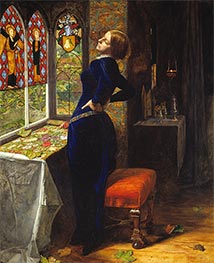
Mariana in the Moated Grange 1851
Oil Painting
$1892
$1892
Canvas Print
$76.00
$76.00
SKU: MJE-2560
Sir John Everett Millais
Original Size: 59.7 x 49.5 cm
The Makins Collection, Washington, USA
Sir John Everett Millais
Original Size: 59.7 x 49.5 cm
The Makins Collection, Washington, USA
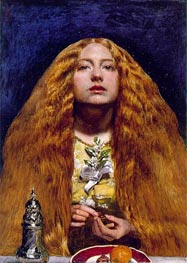
The Bridesmaid 1851
Oil Painting
$980
$980
Canvas Print
$61.56
$61.56
SKU: MJE-2561
Sir John Everett Millais
Original Size: 27.9 x 20.3 cm
Fitzwilliam Museum, Cambridge, UK
Sir John Everett Millais
Original Size: 27.9 x 20.3 cm
Fitzwilliam Museum, Cambridge, UK
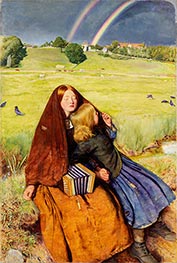
The Blind Girl 1856
Oil Painting
$1931
$1931
Canvas Print
$62.77
$62.77
SKU: MJE-2562
Sir John Everett Millais
Original Size: 83 x 62 cm
Museum and Art Gallery, Birmingham, UK
Sir John Everett Millais
Original Size: 83 x 62 cm
Museum and Art Gallery, Birmingham, UK
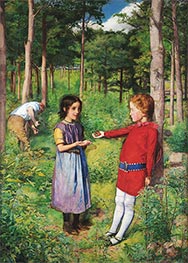
The Woodman's Daughter 1851
Oil Painting
$4091
$4091
Canvas Print
$66.84
$66.84
SKU: MJE-2563
Sir John Everett Millais
Original Size: 89 x 65 cm
Guildhall Art Gallery, London, UK
Sir John Everett Millais
Original Size: 89 x 65 cm
Guildhall Art Gallery, London, UK
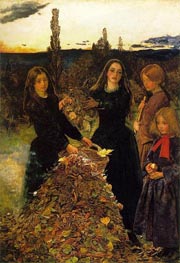
Autumn Leaves c.1855/56
Oil Painting
$2090
$2090
Canvas Print
$63.11
$63.11
SKU: MJE-2564
Sir John Everett Millais
Original Size: 104.3 x 74 cm
Manchester Art Gallery, Manchester, UK
Sir John Everett Millais
Original Size: 104.3 x 74 cm
Manchester Art Gallery, Manchester, UK
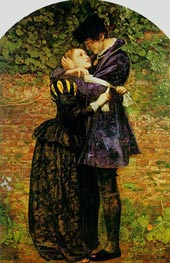
A Huguenot on St. Bartholomew's Day 1852
Oil Painting
$2740
$2740
Canvas Print
$61.56
$61.56
SKU: MJE-2565
Sir John Everett Millais
Original Size: 92.7 x 62.2 cm
The Makins Collection, Washington, USA
Sir John Everett Millais
Original Size: 92.7 x 62.2 cm
The Makins Collection, Washington, USA
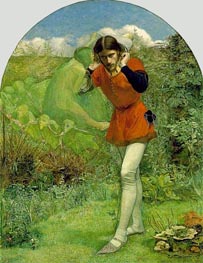
Ferdinand Lured by Ariel c.1849/50
Oil Painting
$2535
$2535
Canvas Print
$72.62
$72.62
SKU: MJE-2566
Sir John Everett Millais
Original Size: unknown
The Makins Collection, Washington, USA
Sir John Everett Millais
Original Size: unknown
The Makins Collection, Washington, USA
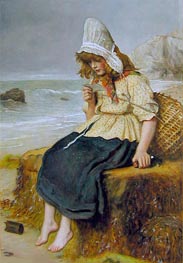
Message from the Sea c.1894
Oil Painting
$1680
$1680
SKU: MJE-2567
Sir John Everett Millais
Original Size: unknown
Collection of Fred and Sherry Ross, New Jersey, USA
Sir John Everett Millais
Original Size: unknown
Collection of Fred and Sherry Ross, New Jersey, USA
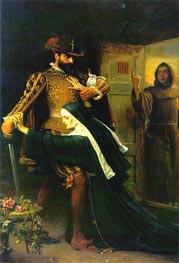
Mercy: St Bartholomew's Day, 1572 1886
Oil Painting
$2313
$2313
SKU: MJE-2568
Sir John Everett Millais
Original Size: unknown
Tate Gallery, London, UK
Sir John Everett Millais
Original Size: unknown
Tate Gallery, London, UK

The North-West Passage 1874
Oil Painting
$2389
$2389
Canvas Print
$70.57
$70.57
SKU: MJE-2569
Sir John Everett Millais
Original Size: unknown
Tate Gallery, London, UK
Sir John Everett Millais
Original Size: unknown
Tate Gallery, London, UK
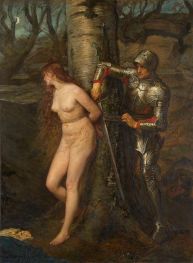
The Knight Errant 1870
Oil Painting
$1989
$1989
Canvas Print
$68.37
$68.37
SKU: MJE-2570
Sir John Everett Millais
Original Size: 184 x 135.3 cm
Tate Gallery, London, UK
Sir John Everett Millais
Original Size: 184 x 135.3 cm
Tate Gallery, London, UK

The Order of Release 1746 c.1852/53
Oil Painting
$2336
$2336
Canvas Print
$65.83
$65.83
SKU: MJE-2571
Sir John Everett Millais
Original Size: 103 x 73.7 cm
Tate Gallery, London, UK
Sir John Everett Millais
Original Size: 103 x 73.7 cm
Tate Gallery, London, UK
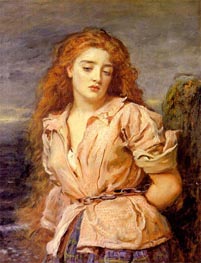
The Matyr of the Solway 1871
Oil Painting
$1119
$1119
Canvas Print
$74.47
$74.47
SKU: MJE-2572
Sir John Everett Millais
Original Size: 70.5 x 56.5 cm
Walker Art Gallery, Liverpool, UK
Sir John Everett Millais
Original Size: 70.5 x 56.5 cm
Walker Art Gallery, Liverpool, UK
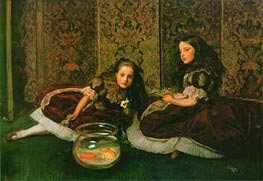
Leisure Hours 1864
Oil Painting
$2090
$2090
Canvas Print
$69.55
$69.55
SKU: MJE-2573
Sir John Everett Millais
Original Size: 89 x 118 cm
Detroit Institute of Arts, Michigan, USA
Sir John Everett Millais
Original Size: 89 x 118 cm
Detroit Institute of Arts, Michigan, USA
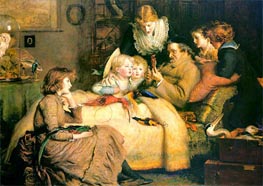
Ruling Passion n.d.
Oil Painting
$2469
$2469
SKU: MJE-2574
Sir John Everett Millais
Original Size: unknown
Private Collection
Sir John Everett Millais
Original Size: unknown
Private Collection
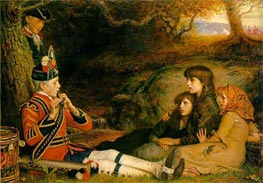
An Idyll of 1745 (The Piper) 1884
Oil Painting
$2111
$2111
Canvas Print
$67.86
$67.86
SKU: MJE-2575
Sir John Everett Millais
Original Size: unknown
Lady Lever Art Gallery, Port Sunlight, UK
Sir John Everett Millais
Original Size: unknown
Lady Lever Art Gallery, Port Sunlight, UK
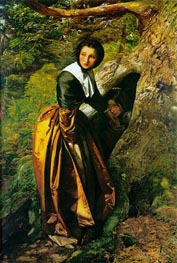
The Proscribed Royalist 1651 1853
Oil Painting
$2785
$2785
Canvas Print
$62.77
$62.77
SKU: MJE-2576
Sir John Everett Millais
Original Size: unknown
Private Collection
Sir John Everett Millais
Original Size: unknown
Private Collection
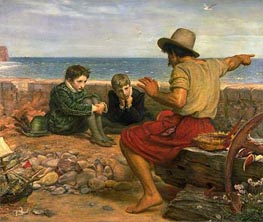
The Boyhood of Raleigh 1870
Oil Painting
$1177
$1177
Canvas Print
$80.41
$80.41
SKU: MJE-2577
Sir John Everett Millais
Original Size: 120.6 x 142.2 cm
Tate Gallery, London, UK
Sir John Everett Millais
Original Size: 120.6 x 142.2 cm
Tate Gallery, London, UK
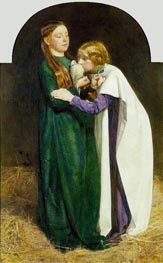
The Return of the Dove to the Ark 1851
Oil Painting
$1989
$1989
SKU: MJE-2578
Sir John Everett Millais
Original Size: unknown
Ashmolean Museum, Oxford, UK
Sir John Everett Millais
Original Size: unknown
Ashmolean Museum, Oxford, UK
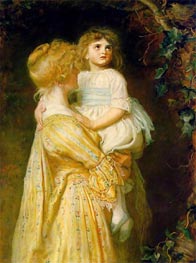
The Nest 1887
Oil Painting
$1680
$1680
SKU: MJE-2579
Sir John Everett Millais
Original Size: unknown
Lady Lever Art Gallery, Port Sunlight, UK
Sir John Everett Millais
Original Size: unknown
Lady Lever Art Gallery, Port Sunlight, UK